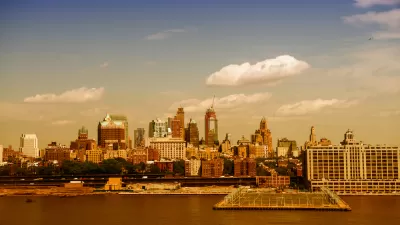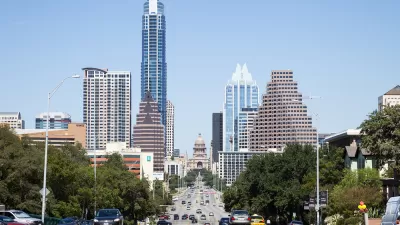Eliot Brown, commercial real estate reporter for The Wall Street Journal, writes on urban trends largely influenced by firms seeking to attract the brightest young workers with decidedly urban preferences. Mid-size and large cities are prospering.

"In the latest period tracked, between mid-2012 and mid-2013, the overall population of cities rose 1.02% compared with 0.96% in the suburbs, according to an analysis of Census data by the Brookings Institution," writes Brown.
Where urban growth is clearing outpacing growth in the suburbs is demand for commercial rent space, measured by the increase in rent prices.
Office rents sought by landlords in urban areas rose 18.7% in the past four years, based on end-of-2014 estimates, compared with just 3.3% in the suburbs, according to real-estate research firm CoStar Group Inc.
One of the major reasons driving this demand are "location decisions being driven largely by job recruiting, say experts," writes Brown. "Companies seeking to lure the best and smartest young college graduates say the right location gives them an advantage over other employers."
Whatever its cause, the trend is spreading to midsize cities, such as Nashville and Cleveland, where a long-struggling downtown [in Cleveland] is beginning to draw residents seeking city life without the high cost they would face in New York or Boston.
In a related earlier article, Brown writes about the "clustering" of many tech companies, particularly Googe in Manhattan since purchasing "one of the largest office buildings in Manhattan for more than $1.8 billion," according to a December 2010 New York Times article.
Unlike many existing large companies in Manhattan, tech companies highly value proximity for their workers. Google has accumulated proximate properties on the west side to hold a total of 4,000 workers, second only to their Mountain View, Calif. headquarters, writes Brown.
FULL STORY: Young Drive an Urban Rebound Recent Trend Reverses Decades in Which Suburbs Grew Faster Than Cities

Planetizen Federal Action Tracker
A weekly monitor of how Trump’s orders and actions are impacting planners and planning in America.

Restaurant Patios Were a Pandemic Win — Why Were They so Hard to Keep?
Social distancing requirements and changes in travel patterns prompted cities to pilot new uses for street and sidewalk space. Then it got complicated.

Map: Where Senate Republicans Want to Sell Your Public Lands
For public land advocates, the Senate Republicans’ proposal to sell millions of acres of public land in the West is “the biggest fight of their careers.”

Maui's Vacation Rental Debate Turns Ugly
Verbal attacks, misinformation campaigns and fistfights plague a high-stakes debate to convert thousands of vacation rentals into long-term housing.

San Francisco Suspends Traffic Calming Amidst Record Deaths
Citing “a challenging fiscal landscape,” the city will cease the program on the heels of 42 traffic deaths, including 24 pedestrians.

California Homeless Arrests, Citations Spike After Ruling
An investigation reveals that anti-homeless actions increased up to 500% after Grants Pass v. Johnson — even in cities claiming no policy change.
Urban Design for Planners 1: Software Tools
This six-course series explores essential urban design concepts using open source software and equips planners with the tools they need to participate fully in the urban design process.
Planning for Universal Design
Learn the tools for implementing Universal Design in planning regulations.
Heyer Gruel & Associates PA
JM Goldson LLC
Custer County Colorado
City of Camden Redevelopment Agency
City of Astoria
Transportation Research & Education Center (TREC) at Portland State University
Camden Redevelopment Agency
City of Claremont
Municipality of Princeton (NJ)





























